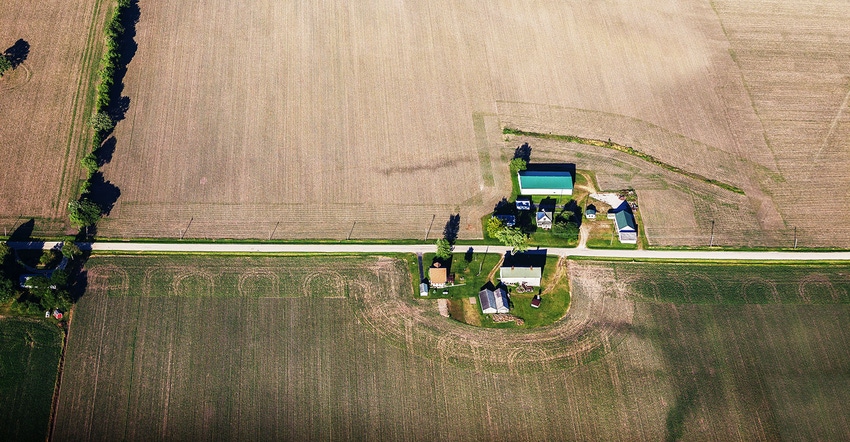June 2, 2021

Interest in purchasing agricultural land has grown since a coronavirus pandemic-induced slowdown blanketed the land market last spring. Farmers are feeling more financially secure as strong commodity prices arrived on top of large government payments in 2020. This is propelling farmers to bid more aggressively for additional land than has been the case during the past six years.
“Farmland sales prices are up 5% to 15% in the past six months with most of the increase coming since the first of the year,” said Randy Dickhut, senior vice president of real estate operations at Farmers National Company. “Competitive bidding among interested buyers is really pushing land prices right now.”
Related: Farmland market shows strength, resilience compared to 2020
Individual investors, both first-time, and experienced buyers, are stepping into the land market as they search for a safe, long-term real estate investment in a low interest rate environment. Investor buyers seldom outbid farmer-buyers for a good farm unless they have 1031 tax-deferred exchange funds to spend in a short time period.
The increase in ag land prices is happening in most areas of the Grain Belt and with most types of land.
“At Farmers National Company auctions, we are seeing competitive bidding push prices for good cropland to levels approaching 2014 values,” Dickhut said. “Average to lower quality farms are experiencing stronger sales prices, too, while pastureland increases are more modest.”
Related: Did COVID-19 create new farmland competitors?
The demand for good farmland is outstripping the supply of farms for sale. During the previous few years, the number of farms for sale has been lower but there remained enough demand in the farmland market to balance the lower supply resulting in steady land prices. At this time, the strong demand to own farmland is one of the main factors pushing prices higher.
Higher land values will bring more sellers into the market as estates, trusts, recent inheritors and family groups will decide to sell the farm or ranch and capture the higher prices. Also, uncertainty surrounding future tax policies will trigger a sale sooner than later for some.
Related: Farmland values boosted by lack of land for sale, higher crop prices
Landowners who are thinking of selling their farm are now factoring in both the higher proceeds they would get from the sale and what potential tax obligations might be due.
The land market will be balancing increased demand for good cropland against what might be an increasing supply of farms for sale.
“Our agents are fielding an increased number of calls from landowners who want to sell because of the aforementioned reasons. Our pipeline of sales activity for summer and fall is filling up,” Dickhut said.
Related: Optimism fuels farmland market
Farmers National Company’s land sales activity has already been very brisk and above the market the past seven months with dollar volume of land sold up 60% over last year and up 67% over the average of the past three years. The number of acres sold in this time period is up 64% from last year.
In a rising land market, it becomes more difficult to predict what a farm will actually sell for on any given day especially when there is demand from both farmers and investors, Dickhut said.
“The best way to sell cropland in the current market is to take it to auction or some form of competitive bidding that brings together the potential buyers and lets them push the price,” he said.
Here's a look at sales by region.
Iowa, Illinois and Missouri
“Iowa cropland prices statewide are up 13% since January while Illinois’s prices are up 10%,” said David Whitaker, area sales manager for Farmers National Company.
Missouri increases are less but still significant.
“We are seeing $13,000, $14,000 and $15,000 per acre sales for good cropland at our recent auctions. Medium quality farms are also selling well now which is a change from the past few years,” Whitaker said.
The land market has more buyers than sellers and the inventory of farms for sale is at a low point.
“The prospect for seven-dollar corn drives the demand for good cropland in the Corn Belt. It is making farmers even more bullish to buy farmland,” Whitaker said.
Related: What are outside forces doing to farmland values?
Indiana, Michigan, Ohio and Kentucky
“We are seeing land prices up 9% to 11% for the good cropland in the area,” said Linda Brier, area sales manager for Farmers National Company.
“At Farmers National Company auctions, we have seen sales well over $13,000 per acre for good cropland. Price levels vary by state, but good cropland is strong everywhere,” Brier said. “Prices have definitely increased since fall and even more so since the first of the year.”
North Dakota, South Dakota, and Minnesota
“We are seeing land prices up 10% to 15% for good cropland in the area,” said Brian Mohr, area sales manager for Farmers National Company.
Prices for ranchland and pasture are relatively stable and not experiencing the same increases as good cropland in the region. Investor buyers are showing more interest in ranches in the West River region. Drought concerns have tempered buying interest in the most susceptible areas.
Related: Farmland values strengthen heading into 2021
Nebraska, Kansas, Oklahoma, Texas, and Arkansas
“We are seeing land prices up 10% to 12% for good cropland in the area,” said Paul Schadegg, area sales manager for Farmers National Company.
Prices for dryland farms in the Western Plains are strengthening, too, after a longer period of low demand.
“There is now more demand for average to lower quality land than there has been for a number of years,” he said.
Source: Farmers National Company, which is solely responsible for the information provided and is wholly owned by the source. Informa Business Media and all its subsidiaries are not responsible for any of the content contained in this information asset.
You May Also Like




